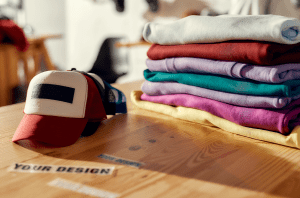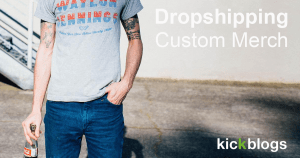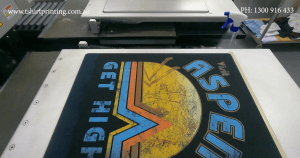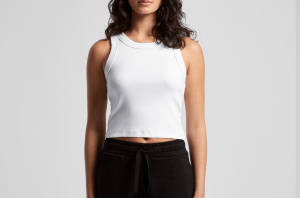How Does Print on Demand Work?

If you’ve ever taken a sip out of a branded water bottle or worn a t-shirt with a famous slogan on it, there’s a good chance you purchased something that was printed on demand.
Unlike back in the day where digital printing wasn’t around and customising products had to be printed in bulk, today it’s possible to do it on a much smaller scale and only at the customer’s request.
How does print on demand work? The print on demand process is the act of printing customised designs on things like t-shirts and caps etc, but only in an order number requested by the customer.
By not having excess stock or printing anything in stock, the waste is minimised, but there are some caveats to consider.
The print-on-demand method has become more popular than ever thanks to advancements in lightning-fast digital printing technology, and if you run an e-commerce store, you might have wondered what it has to offer.
This guide will walk you through the ins and outs of the print-on-demand trend so you can see if it’s a good fit for your business.
What is Print on Demand?
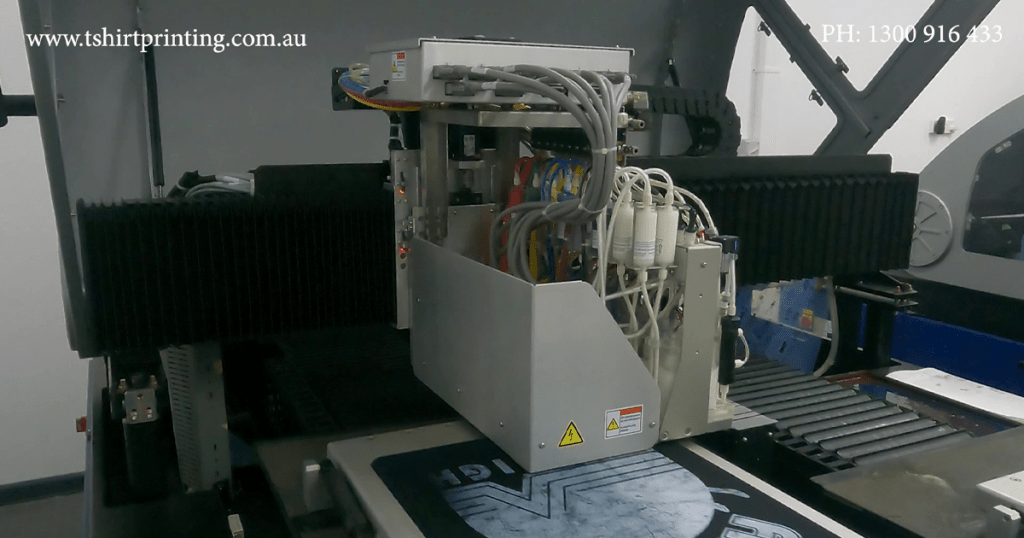
The print on demand method is exactly as its name suggests, and means products are printed as they’re demanded.
In the past, customised designs and branded products were usually created in bulk and there was no efficient way to make just one or two of an item and sell it forward.
This meant a business would often have a large amount of stock waiting to be sold, and as seasons changed, they had a new promotion, or certain things went out of fashion, the stock that was leftover would have to be thrown out.
However, due to advancements in digital printing and a whole host of methods now at our fingerprints, it’s easy enough for businesses to print just one or two of a product whenever the customer requests it.
There are obvious benefits to this method, like reduced costs and minimal waste, but it comes with various downsides that should be weighed up by the individual business.
How Does Print on Demand Work?
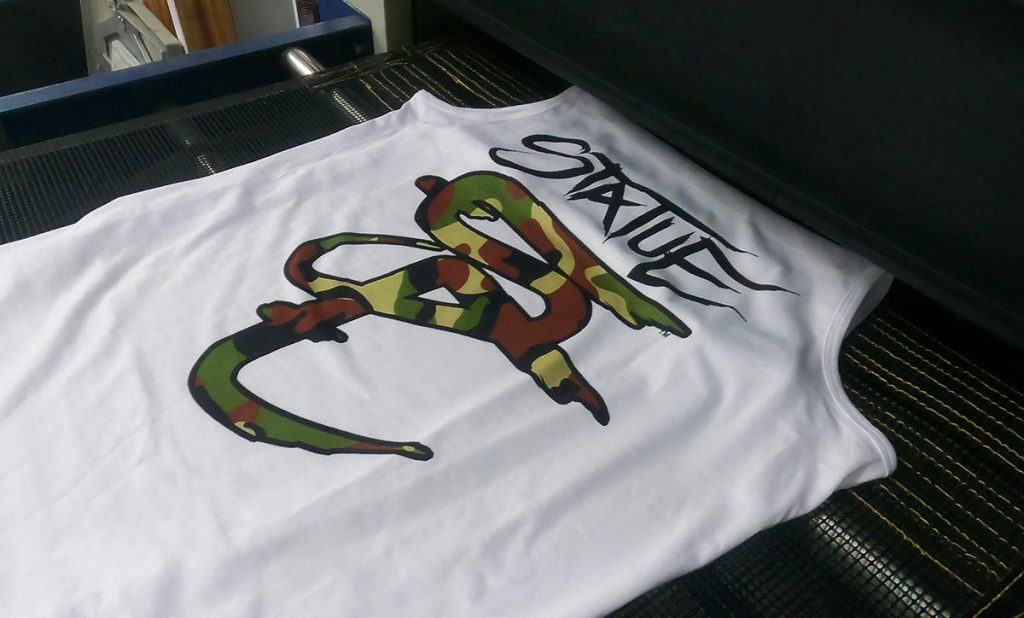
Print-on-demand is a fulfilment method that waits for a customer’s order to be made before it starts the printing process.
Like other popular methods used by e-commerce today, there’s no need for the company selling the goods to actually hold any of the stock or ship it, as this is all handled by a third party.
Here’s how the process works:
- A business registers with a third-party printing service and connects its existing store with an account.
- They create a range of designs that they plan on selling on their website, including images and slogans, so everything is ready to go.
- These designs are then marketed through various channels and sold on the e-commerce store as t-shirts, hoodies, mugs, mouse mats, and any other products you plan on selling.
- A customer visits your store and purchases a t-shirt with one of the predetermined designs.
- Behind the scenes, this order is sent to the printing service you’re registered with and they begin making the t-shirt.
- The print-on-demand service charges a fee for printing and fulfilment that you can take out of the purchase price.
- Once it’s complete, they ship the shirt to your customer and send you the tracking information.
- You deal with the customer service beyond that point and get to keep the leftover profit.
In contrast to a larger company that might find it better to print 100 t-shirts using the same design, print-on-demand reduces the chance of waste and saves the business money by only ever making what was ordered.
Various companies offer print-on-demand services and their prices and options are all different, so you’ll need to think about what your company or brand needs specifically to find the right fit.
The Pros and Cons to Look At
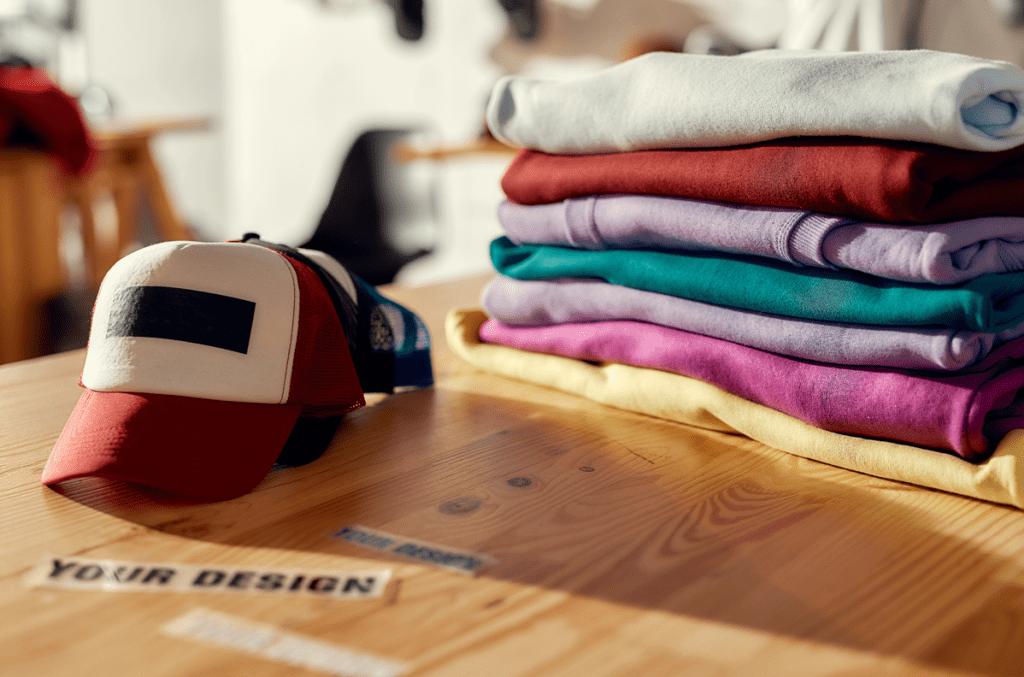
Print on Demand has a lot to offer the modern business, but that doesn’t mean it should be the preferred method of fulfilment for everyone.
Some e-commerce stores will benefit more from print on demand than others, so check out the pros and cons that come with this model to see how effective it might be for yours.
Pros
- No waste: When you’re not printing bulk orders of shirts, there’s no need to worry if they’re selling or not. The print-on-demand method stays true to its name and will only print what’s ordered, so you’re not going to be left with excess stock hanging around.
- Costs nothing: Although technically not free, you don’t need any money to start using a print-on-demand service. Once your designs are done, the customer will pay for the order and the third-party printer takes a cut from that, which means you’re only left with the profit.
- Gives you creative control: Being able to design your own products is a huge bonus, and it works especially well for independent artists and small businesses that want their personalities and vision to shine through. This way, you still have some say over what your final product will be, and it’s not just some mass-produced, meaningless thing.
- Low risk: There’s no need to pump thousands of dollars into a business just to get started with print-on-demand, and the risks are considerably lower. You’ll still need to create the designs and market them, but that’s about as far as the risk-taking goes.
Cons
- Longer turnaround: When you compare this method to having a warehouse full of goods ready to go, it’s noticeably slower. You must wait for the printing service to receive the order and print the product, then send it on. Your customers can expect to wait a few more days than with something that’s already made.
- Varying profit margins: It can be hard to plan for the future with print-on-demand as the profit margins can vary dramatically between each sale. This is why it’s important to choose a third-party printing service with a clear definition of their fees so you know what to charge for your products to turn a consistent profit.
- Higher costs for customers: As you’re only printing one thing at a time, you miss out on the perks of mass production, so you can expect the products to be more costly for the customer as well.
- Still requires work: Contrary to popular belief, the print-on-demand method isn’t a hands-off one and still requires a lot of input on your part. You’ll need to make the designs and market your products to the public, both of which can take a lot of time and effort.
- No control over fulfilment: The print-on-demand method might not suit everyone as you must give up complete control of the fulfilment process to someone else. Not being able to control or see how fast an order is being made, how carefully it’s packaged, and what the final product even looks like is enough to make most people nervous. You need a trustworthy and reputable supplier to ease some of these concerns.
Print on Demand vs Dropshipping
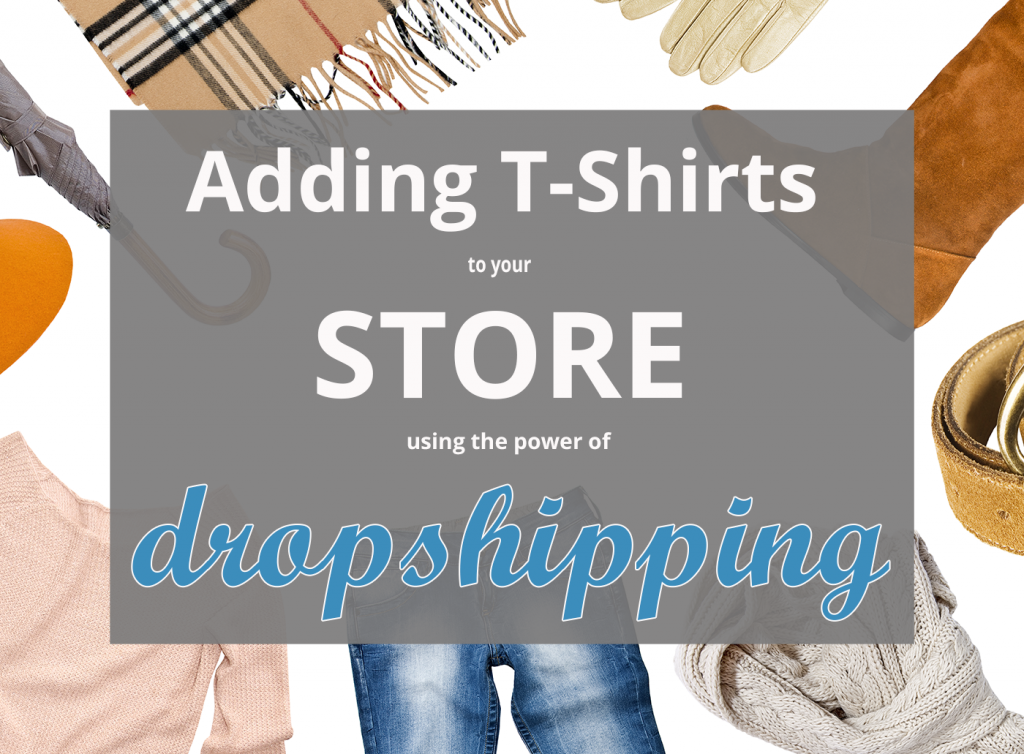
When weighing up the best fulfilment method for your business, there’s a good chance you’ve looked at dropshipping and print on demand as each having something to offer.
Although they run on the same premise that the business itself might not stock the inventory or the manufacturing equipment to make it, they’re vastly different.
A company that uses the dropshipping method will have the orders passed through a third-party provider who will package and ship the items for them, and at no time do they hold these goods.
However, where print-on-demand doesn’t create the product until an order has been made, dropshipping usually relies on products that are already manufactured and sitting in a warehouse.
There’s no single solution that will work for every business, and some might even choose to have part of their inventory sold through dropshipping and the rest with print on demand.
Each company should establish the cost, efficiency, and suitability for their customers and product range before settling on a fulfilment method that works.
Making It Work For Your Business

As with any other business model, it’s not smart to simply dive into print on demand without a plan and think you’re going to become rich overnight.
If you’ve established that it’s probably a good fit for your store, you’ll then need to figure out how to make sure you succeed, so follow some of these tips to get started:
- Before starting an e-commerce store, you have to choose a niche. It should be an area you’re interested in so that you’re passionate about it, but also one that will attract customers. You want the store to focus on something specific but be broad enough to entice a range of people to visit.
- Take some time to research the concept and make sure that it’s going to be enticing enough for customers to visit. Look through discussion boards, online forums, social media pages, and Google Trends for keywords that relate to your idea and see if it’s trending.
- After you’ve come up with some ideas for products, search for them on all of the online marketplaces from Etsy through to Amazon. You might find that your product is unique or it’s already being sold by others, neither of which would be a bad thing, but it may impact how you market and sell yours.
- Choose a reputable print-on-demand service when looking for potential suppliers and compare each of their offerings to find one that has what your business needs. Look at product quality, pricing, shipping, and average turnaround time to find one that suits you.
On-Demand and In Control
There are plenty of perks in the print-on-demand business model and also some downsides, but it might not be right for every e-commerce setup.
To find the best approach for getting your goods to the customer and turning a decent profit, you should weigh up all possible options and consider using more than one fulfilment method to hit that sweet spot.
Related Questions
The print-on-demand method e-commerce model is a great way to reduce waste and only create the goods that you need, but that doesn’t mean it’s right for every business.
If you have further questions about the various printing and manufacturing methods an e-commerce store might use and have been considering dropshipping as a point of interest, we’ve answered some common ones to help.
Can I Dropship With No Money?

The dropshipping method requires no upfront costs in terms of inventory, as this is handled by a third party, but you will still need some money for the rest of the business.
Creating a website, marketing your products, and the day-to-day running of the company will all take time and money, so it’s not completely free.
What’s Better Dropshipping or Amazon FBA?
The best fulfilment method for your business will depend on its size and product range, with most smaller businesses and newcomers finding dropshipping to be more beneficial.
Amazon FBA might be a better choice for larger-scale online businesses with a wider range of inventory to sell.
What is Drop Servicing?
Drop servicing is the act of selling a service to a customer and then outsourcing that work to a freelancer to complete, compared to selling a product.
The goal of this method is to charge the customer more than what you’re paying the freelancer to finish the job and then take the leftover profit.


